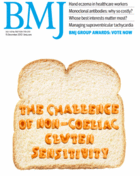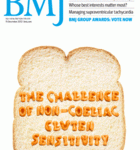 We are I think, cognitive of the concept that behaviour can affect lifespan, and whilst bungee jumping is a well regulated sport, it does make most people feel intimidated and conscious that their life may be significantly shortened in the event of an equipment failure. We are also well aware that the burden of disease going forward will be driven by these type of behavioural choices, one of the most important being what we put in our mouth – and yes, food is a key risk factor.
We are I think, cognitive of the concept that behaviour can affect lifespan, and whilst bungee jumping is a well regulated sport, it does make most people feel intimidated and conscious that their life may be significantly shortened in the event of an equipment failure. We are also well aware that the burden of disease going forward will be driven by these type of behavioural choices, one of the most important being what we put in our mouth – and yes, food is a key risk factor.
Well the British Medical Journal (god bless them) has been exploring the relative cost of some of the mouth realted option risks in relation to shortening a western lifespan.[1]
Professor David Spiegelhalter, a statistician at the University of Cambridge, looked to find a simple way of communicating the impact of our behaviours on expected length of life.
He suggests using the concept of ageing faster or slower, by expressing the daily effect of lifestyle habits as “microlives” (half hours of life expectancy). A half hour of adult life expectancy can be termed a microlife as it is loosely equivalent to one millionth of life after age 35, he explains.
His paper suggests:
A few of the behaviours that can shave 30 minutes per day off of a person’s life:
- Smoking two cigarettes a day
- Drinking two extra alcoholic drinks a day (three a day for women and four a day for men)
- One portion of red meat a day
- An extra 11 pounds of body
- Watching two hours of television a day
It’s not all bad news, though. The following behaviours can add time to your life, according to Spiegelhalter’s analysis:
- Drinking one alcoholic drink a day adds 30 minutes a day
- Exercising moderately for 20 minutes a day adds 1 hour a day
- A daily diet of fresh fruits and vegetables adds 2 hours a day
- Being female rather than male adds 2 hours a day
- he also suggests taking statins will do the same, but I am less persuaded this is a lifestyle choice and more a physicians choice for people unwilling to make suitable lifestyle changes!
This form of communication allows a general, non-academic audience to make rough, but fair comparisons between the sizes of chronic risks, and is based on a metaphor of “speed of ageing,” which has been effective in encouraging cessation of smoking, says Professor Spiegelhalter.
So each day of smoking 20 cigarettes (10 microlives) is as if you are rushing towards your death at 29 hours rather than 24.
He points to several limitations and stresses that these assessments are very approximate and based on numerous assumptions. However, he says they “bring long term effects into the present and help counter temporal discounting, in which future events are considered of diminishing importance.”
In spite of the limitations, he concludes that “a reasonable idea of the comparative absolute risks associated with chronic exposures can be vividly communicated in terms of the speed at which one is living one’s life.”
He adds:
Of course, evaluation studies would be needed to quantify any effect on behaviour, but one does not need a study to conclude that people do not generally like the idea of getting older faster.
Reference
[1]Spiegelhalter D. Using speed of ageing and “microlives” to communicate the effects of lifetime habits and environment. BMJ. 2012 Dec 14;345:e8223.





